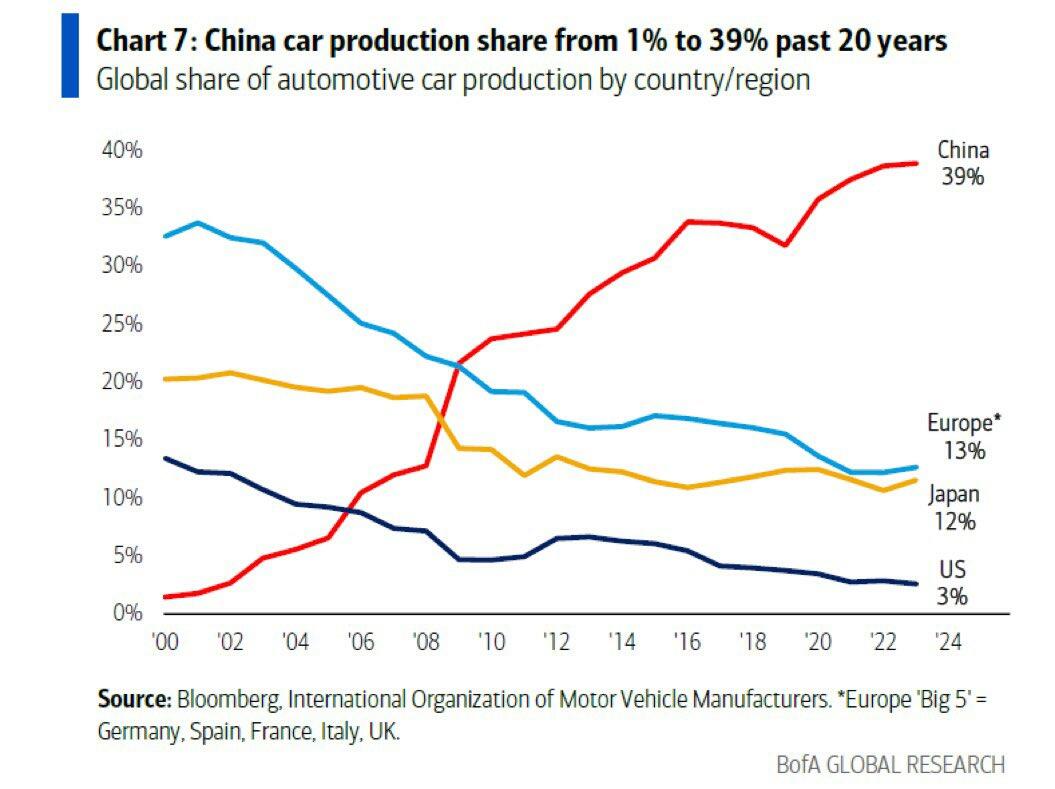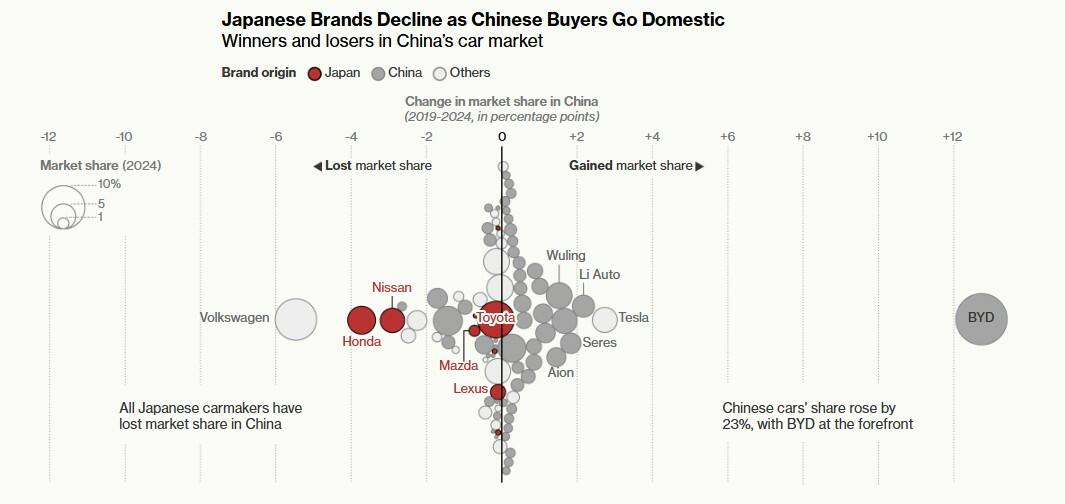(Zero Hedge)—China has transformed itself from a minor player in the auto industry two decades ago to the world leader in car production and exports, particularly in electric vehicles (EVs), the New York Times reported late last month.
But the trend of China’s impact on the global auto market has been best characterized by this chart, published over the weekend, showing how Chinese car production has gone from 1% to 39% of global production in 20 years.
The rapid ascent was fueled by significant government investment, advancements in automation, and the growth of its domestic market, which is now the largest globally.
The NYT piece said that as domestic sales have slowed due to economic headwinds, China has increasingly turned to international markets to sell its cars, especially EVs.
Chinese brands like BYD have gained global recognition for offering advanced electric cars at highly competitive prices, exporting more EVs than any other country. Major markets include Europe, where compact models are popular, and Southeast Asia, where affordability drives demand.
We wrote back in November that China was even dethroning many of its long-rivaled Japanese competitors. Between 2019 and 2024, Japanese automakers experienced the steepest market share declines in China, Singapore, Thailand, Malaysia, and Indonesia, according to Bloomberg’s analysis of sales and registration data.
Japanese automakers aren’t just losing ground across Asian countries, with all six tracked by Bloomberg experiencing declines in China – but also globally as shown in the above chart.
Even Toyota, the global leader in car volume, has seen its sales stagnate. In Southeast Asia, a traditional stronghold for Japanese brands, market share has dropped sharply.
In Thailand and Singapore, Japanese carmakers now control just 35% of the market, down from over 50% in 2019, while streets once dominated by Nissan and Mazda are increasingly filled with Chinese brands.
China’s leadership in EVs is the result of over a decade of focused government support, including subsidies, tax breaks, low-interest loans, and heavy investment in battery technology.
Since 2009, over $230 billion has been funneled into the EV and battery sectors, the New York Times reported.
Chinese automakers also maintain a significant cost advantage over their global competitors. Cars made by Chinese companies cost roughly 30% less to assemble, largely due to control over the battery supply chain, lower labor costs, and more efficient production processes.
However, China’s dominance has raised concerns globally. Countries like the U.S. and the European Union have imposed tariffs on Chinese EVs, citing unfair subsidies and the potential threat to local industries. Despite these trade barriers, Chinese vehicles remain competitive because of their lower prices and comparable quality.
China’s heavy investment and technological edge position it to continue dominating the global auto market. Even with intensifying international pushback, its production capacity, cost advantages, and leadership in EV technology suggest that its influence will persist for years to come.
Recall just days ago we wrote that GM was taking a more than $5 billion charge and closing plants to address its declining business in China.
What Would You Do If Pharmacies Couldn’t Provide You With Crucial Medications or Antibiotics?
The medication supply chain from China and India is more fragile than ever since Covid. The US is not equipped to handle our pharmaceutical needs. We’ve already seen shortages with antibiotics and other medications in recent months and pharmaceutical challenges are becoming more frequent today.
Our partners at Jase Medical offer a simple solution for Americans to be prepared in case things go south. Their “Jase Case” gives Americans emergency antibiotics they can store away while their “Jase Daily” offers a wide array of prescription drugs to treat the ailments most common to Americans.
They do this through a process that embraces medical freedom. Their secure online form allows board-certified physicians to prescribe the needed drugs. They are then delivered directly to the customer from their pharmacy network. The physicians are available to answer treatment related questions.






